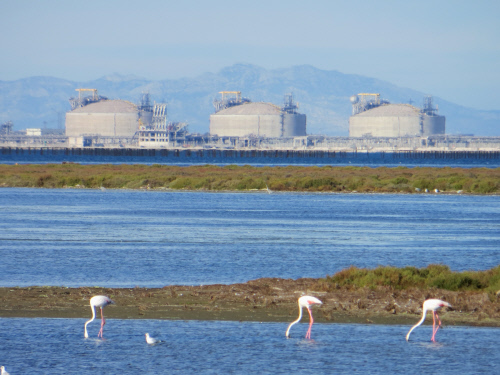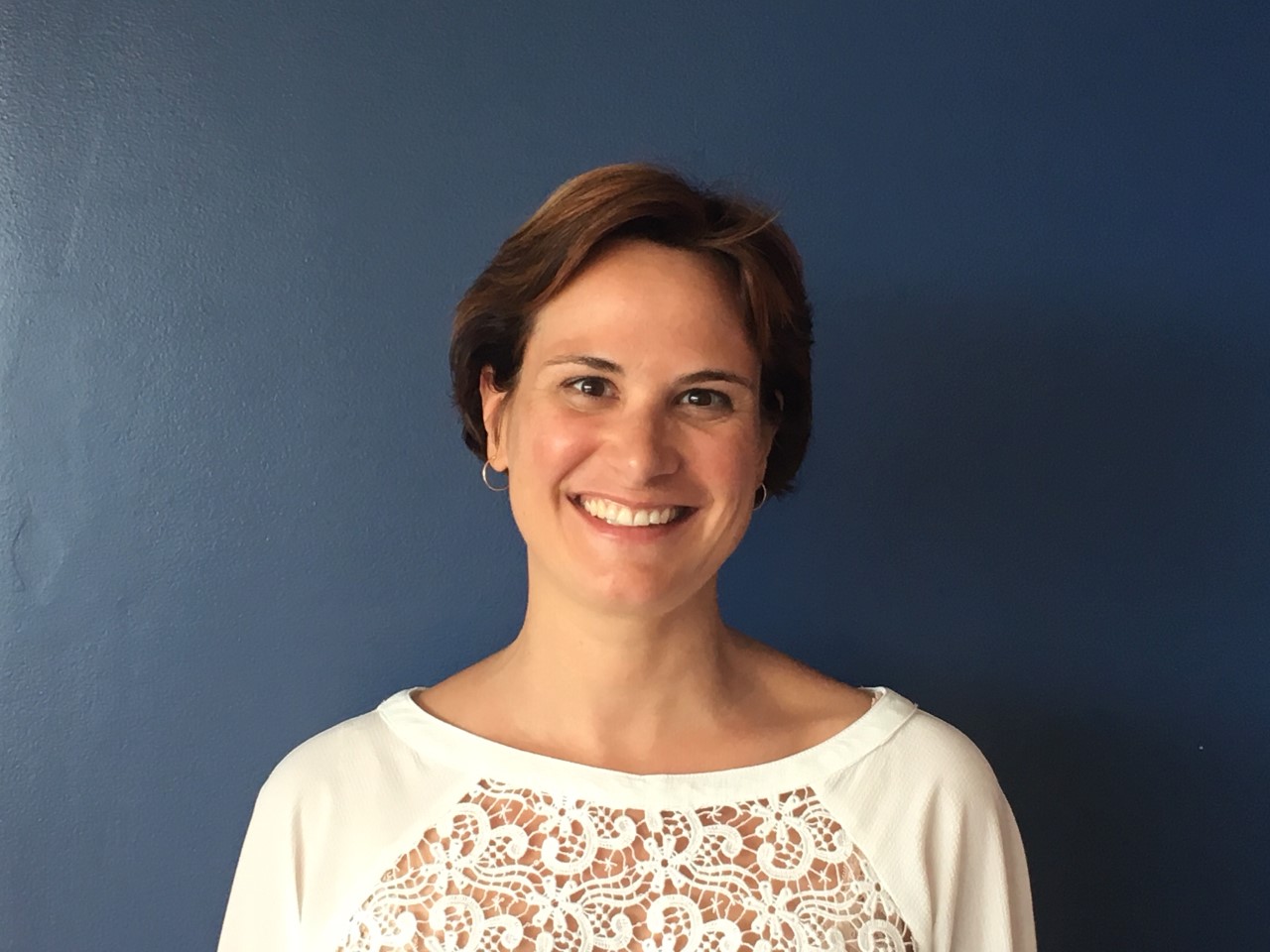

Who is Marianne?
After a PhD in analytical chemistry (mass spectrometry), I joined Gaz de France in 2007 after completing my thesis and postdoctoral studies in the medical and pharmaceutical fields. The ENGIE Lab CRIGEN (ENGIE’s research center) was looking for an expert in my discipline.
An industrial company like ENGIE is always concerned about the impact it can have on the environment and human health. At the research center, several assignments focused on improving our understanding and controlling of the impact of the Group's activities on both the environment and health. Logically, the search for eco-responsible alternatives then became a subject in its own right.
I wanted to maintain the dual experience in analytical chemistry and bio-chemistry/biotechnologies that I had acquired during my studies. That is why I was entrusted with an assignment commissioned by Elengy to find an alternative to the chemical treatments applied to seawater that are used in the LNG regasification process.
What does that project involve?
ENGIE's traditional industrial activities have been closely linked to natural resources: gas, of course, but sometimes also to water. For both fluids, we need to manage filling and discharge.
Industrial water networks (involving both seawater and fresh water) are used for example in heat exchange to heat or cool fluids. Currently they use chlorination and other toxic chemicals. If the water in circulation is not treated, macro-organisms (e.g. mollusks, algae) develop, invade the walls and block the pipes, causing a drop in performance and reliability.
Ensuring good performance and the reliability of water networks is therefore also at the heart of ENGIE's business lines: correctly managing its infrastructure and performance while reducing their impact on the environment.
It is not about treating drinking water or purifying water to make it drinkable. It is about using water as a natural resource for our industrial activities and releasing it into the environment in a cleaner and more responsible way. Because of regulations, solutions based on chlorine or other molecules that are highly toxic to the environment are used much less, and "green" solutions to reduce environmental impacts are being promoted.
We developed Bioscyance within this highly challenging context. It is a solution that uses natural marine bio-molecules to prevent the formation of living organisms in industrial and urban water networks. It is a green chemistry subject, with research into new molecules.
Marine biopolymers, using nature’s intelligence
Marine bio-polymers are chains of sugars naturally secreted by bacteria in the seas and oceans as a mucus (like the mucus that covers rocks and makes you slip). These bacteria can be grown industrially in bioreactors. The biopolymers are then separated and packaged for injection into industrial water networks.
Nature does not like conflict, so we play on the principle of natural competition between species. The living organisms in the water will stop growing when they detect the presence of biopolymers. They go dormant, without being destroyed, because they detect a signal – a false alarm – that the area is already colonized.Microorganisms having detected the biopolymers then move along and develop elsewhere.
The importance of the human factor in innovation
For me, innovation means starting from scratch, discovering something that has never been done or using something in a completely different field than the one it was intended for until then. It means accepting making mistakes, starting over, and changing the way you do things but not your objectives.
It turned out that my way of running this innovative project met Elengy's objectives and helped drive the teams: the ENGIE subsidiary financed the project between 2013 and 2018. I also crossed paths with several people who helped me to move forward.
My background was in R&D and innovation, i.e. working to scientifically prove that the technological innovation developed held up well. But this was also an adventure in human terms, including meeting Isabelle Kocher, who I was able to present to directly.
Beyond the professional challenge, these meetings were a real boost on a personal level. The human side of innovation should not be underestimated. When you carry out an innovative project, you can feel "misunderstood" or sometimes even marginalized. It is often complicated to defend a project that spends money without being profitable right away.
The Group's Innovation Trophies played an important role in this process. Submitting applications for the Innovation Trophies is one of the objectives of ENGIE Lab CRIGEN, since it lets the lab display is most audacious projects, from their idea phases to the business end.
So, I applied while the project was still only at the idea stage with just laboratory results and two patent applications but no tests on industrial site. At that stage I wanted to get it better known, have a day to present and join the Group's innovation ecosystem. Moreover, it was the first biotechnology project for ENGIE, in partnership with a young Breton start-up, Polymaris Biotechnology, whose subject resolutely announced the environmental awareness we are experiencing today. I met Florence Cariou, and her support really boosted me and pushed me to continue. Even if my idea was not immediately awarded a prize, I was able to present it twice at the project marketplace, defend it and show its progress.
In 2017, after having developed several semi-industrial pilots (at ELENGY but also at DK6 and for the French Navy) and got tangible, convincing results on site, I once again presented my project. This let me show not only how it had changed and transition to the industrialization stage, but also how to present its strong business potential. This new application for the Trophies as well as the Coup de Pousse training (created by Valérie Blanchot-Courtois: a one-week bootcamp to develop a business idea), communicating on Yammer, etc. made me even more visible to the innovation community, but also among the HR Talents community, led by Valérie Gaudart. Beyond the "technical" and eco-responsible aspects of the project, it was also my personal approach to getting involved in a bold project that was recognized here.
This support network gave me access to the "66 miles" training course at Paris Pionnières (now Willa), a course about female intrapreneurship that allows women with professional or personal projects within their company to acquire skills on how to promote their project, particularly through a "pitch". This training session (in addition to the one at Coup de Pousse) allowed me to refine and structure my project, especially how to defend it to a selection committee and develop its potential.
I think that this training and support helped my pitch hit the mark for the Innovation Trophies committee and allowed me to win the award in the "Green Business” category.
From the idea to the New Business Factory
After winning the Trophy, I continued to pursue a form of lobbying – with the support of the coaches and mentors mentioned above but also external experts who I met at "66Miles" – to prevent Bioscyance from "falling asleep". With reliable technical and economic arguments in its favor, the project was integrated into ENGIE Fab's portfolio at the New Business Factory in 2018.
This is how Marie-Laurence Wacquez, an expert business developer, got involved with the project. She knows a lot about the industrial sector and particularly about water management. Marie-Laurence quickly became personally involved in the project. She is a strong ally and we have been effective partners in developing Bioscyance within ENGIE and externally for almost a year.
We have two parallel goals for the end of the year.
These deadlines are key milestones for Bioscyance; they will be our first two customer references.
We must also work on the commercial offering, to reach as many prospects as possible by the end of the year. At the same time, we need to find new pilot test sites, R&D relays and new applications to show that this technology can be applied to desalination, for example, or to freshwater networks (urban heating and cooling networks) in addition to being used for seawater tests for Elengy or the French Navy.
At the end of the year, we will present our progress to the engagement committee, and we will do everything to convince them to launch Bioscyance in accelerated mode or at least to continue promoting the innovation and its potential.
In conclusion, Bioscyance....
…is a project that brings people together. It is a new, eco-responsible solution that uses natural molecules from the ocean to process water and preserve industrial infrastructure. In my opinion, it is a "feel good" project because the subject is beautiful and because it brings together teams of people from very different backgrounds in terms of skills, history, benevolence, etc.
It's a real human story, and I didn't expect it to be one.
If you don't meet the right people, if you don't make yourself want to do it together, it's difficult to innovate. Not forgetting the role of human beings is important to me, not forgetting the pleasure we can have in innovating together. It was not just the project’s business potential that convinced people of its value (although of course we provided figures and evidence) but also the people who led it and believed in it.
Meeting a community at ENGIE that joined our adventure and that supports it in many ways feels good. Management and my colleagues at ENGIE Lab CRIGEN, the teams at Elengy who are so committed, the innovation people at ENGIE who are so passionate, the HR people who are so curious and benevolent, the teams at ENGIE Fab who are so helpful and give structure, but also all the external key figures we met throughout the life of the project (Polymaris, V. Blanchot-Courtois and other experts and stakeholders in water, business, industry, entrepreneurship, etc.): all these people allowed me to stay the course and keep the desire alive during the development process that I had launched for Bioscyance.
Doubt and fear, "idea-killers", are often reflexively the first feelings we encounter when we start communicating around an idea or innovation
Innovation only bears fruit because of the kindness and audacity of a group of individuals. My project is where it is today thanks to "idea boosters" who listened, surrounded and supported it.